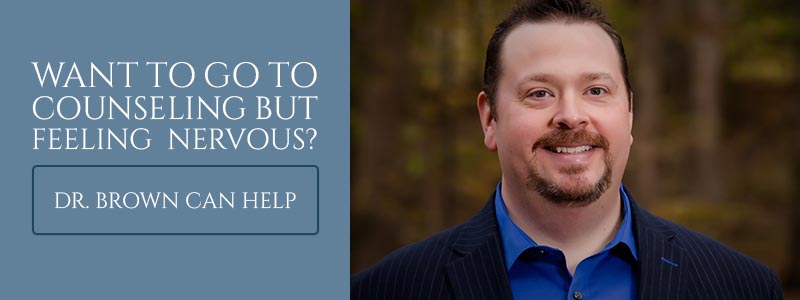Blog

Understanding PTSD and its Symptoms
Even though we often associate trauma and PTSD with soldiers who have encountered war, nearly anyone can experience a traumatic event that can have lasting effects. From auto accidents, to abuse, rape, the loss of a job, the sudden loss of a loved one, and many other situations or events can cause trauma. The challenge for many in being able to understand trauma is that traumatic events or experiences can affect people differently. EMS (Emergency Medical Services) personnel who respond to accidents every day may not be affected in the same way as someone who has never before seen an auto accident occur. When a person experiences a traumatic event that they are not accustomed to, something in their brain is triggered which can lead to an emotional response.
Traumatic experiences can and do lead to PTSD (Post Traumatic Stress Disorder) for millions of people. According to the American Psychiatric Association, approximately 3.5 million adults in the U.S. struggle with the effects of PTSD. If you have experienced a traumatic event, it’s important to understand that you are not alone and that there are effective PTSD treatment strategies, including therapy. Dr. Andy Brown is a licensed professional counselor with an extensive background in psychology as well as physiology. With experience helping patients through hypnotherapy, EMDR (Eye Movement Desensitization and Reprocessing) therapy, and other treatments, Andy is passionate about helping patients understand the disorder and finding a method of treatment that fits their unique needs. Please don’t hesitate to contact Andy Brown for help with PTSD symptoms.
Your Brain and PTSD
Anyone who has done any research on PTSD treatment will quickly find that it’s a disorder that stems from responses in the brain. When someone encounters a traumatic experience, the amygdala is triggered. The amygdala, which is a part of the limbic system of the brain, is where the flight-or-fight response originates. When the amygdala is activated, it sends an emotional response to the adrenal gland, which produces the hormone cortisol. Then, this activates bodily responses in the nervous system, such as dry mouth, a racing heartbeat, or an upset stomach.
In addition to a traumatic event triggering the amygdala and the related emotional response, it also activates the brain’s frontal lobe. The frontal lobe is where problem-solving occurs, as well as memory, judgment, and where rational thoughts stem from. The triggering of the frontal lobe allows your brain to recognize that you are safe and the flight-or-fight responses will eventually go away. The key here is that the memory of the event is still stored in the brain, which is known as a “flashbulb memory.”
If you remember where you were on 9/11, or if you remember the day when a grandparent passed away, you may be able to recall vivid details about the specifics of the moment, who told you, and your immediate reaction to the news. These memories can bring back thoughts and feelings that were felt when the original trauma occurred.
What is Post Traumatic Stress Disorder?
When people experience a traumatic event, either directly or indirectly, they may have a range of reactions. Typically, the reactions and any bodily or mental responses will fade away naturally. However, for someone with PTSD, the frontal lobe is ineffective at telling the body that they aren’t in danger, and the symptoms continue. Anyone who continues to experience reactions may be diagnosed with PTSD. It’s important to note that symptoms of PTSD may not appear for weeks, months, or even years after the event. When the symptoms become regular and begin to interfere with everyday living, relationships, school, or work, it’s important to contact a professional for PTSD treatment and help with managing and even reducing the symptoms. Dr. Andy Brown has been helping patients as a psychotherapist for years and has the experience and training necessary to help with your specific trauma and symptoms.
Three Major Symptoms of PTSD
Even though depression and anxiety are often the symptoms most associated with PTSD, there are three main symptoms that psychologists look for.
Flashbacks: Flashbacks are often portrayed in films when a war veteran is talking to someone or sees something that reminds them of certain events or moments that occurred, which triggers a memory. Flashbacks can happen to anyone and are often intrusive, causing the same reaction as when the event first happened.
Avoidance: In order to reduce the chance of a flashback and related responses from occurring, PTSD patients may try to avoid certain places, people, or activities. They may also try to avoid thinking or talking about the traumatic event, which may increase feelings of isolation.
Hyperarousal: PTSD can cause patients to have difficulty sleeping and concentrating, feel extra jumpy, or become easily irritated or angry without any real danger present.
There are several other symptoms that often stem from the above three main symptoms:
- Anxiety
- Depression
- Panic attacks
- Fatigue
- Restlessness
- Shakiness
Seek Help For Your PTSD Symptoms
This disorder can often disrupt day-to-day living, activities, and relationships, but there are methods of PTSD treatment that can help patients learn how to cope with their symptoms and can even reduce them entirely. The important part is knowing that there is help and hope for a normal and happy life. Physiologists like Dr. Andy Brown have the training and experience to provide insight into the disorder so that you can recover. Whatever traumatic event you experienced, whatever your symptoms, getting help from a professional is the first step. Contact Dr. Brown today.

